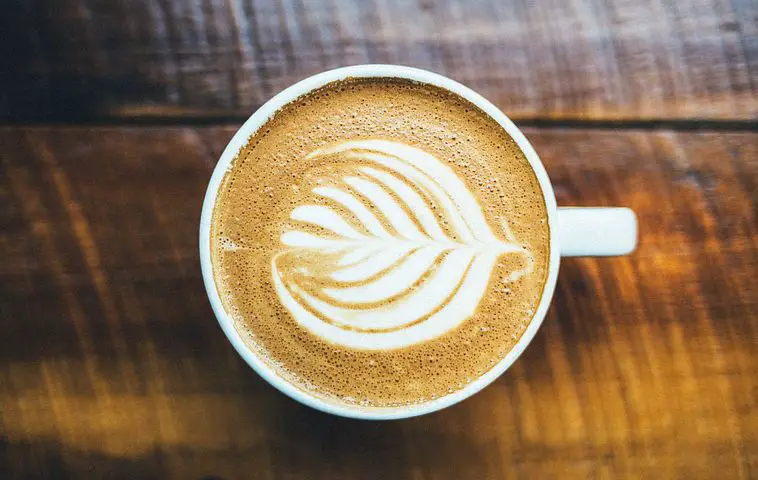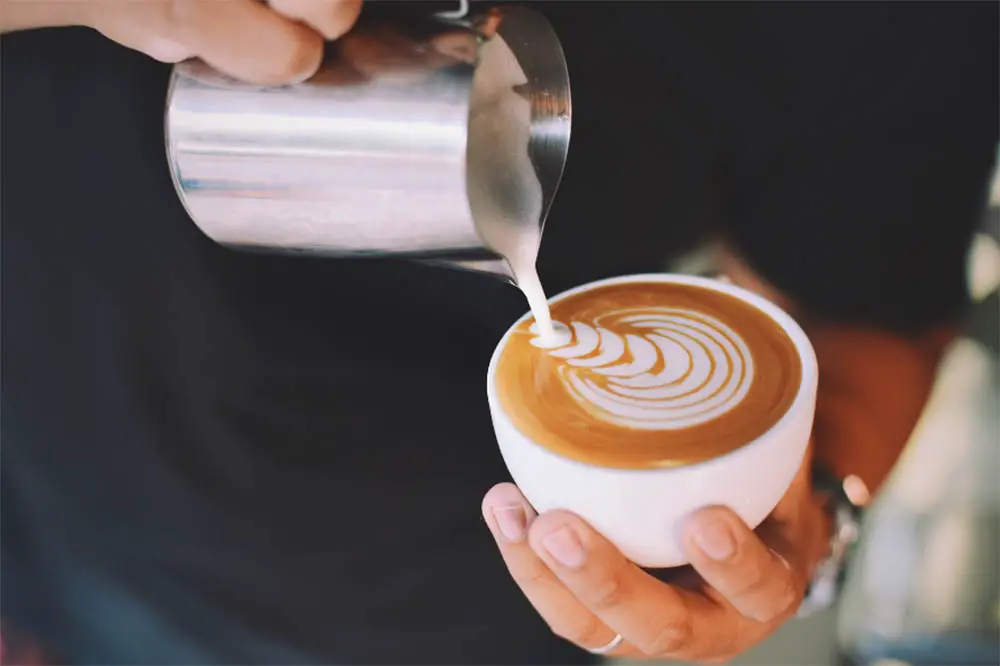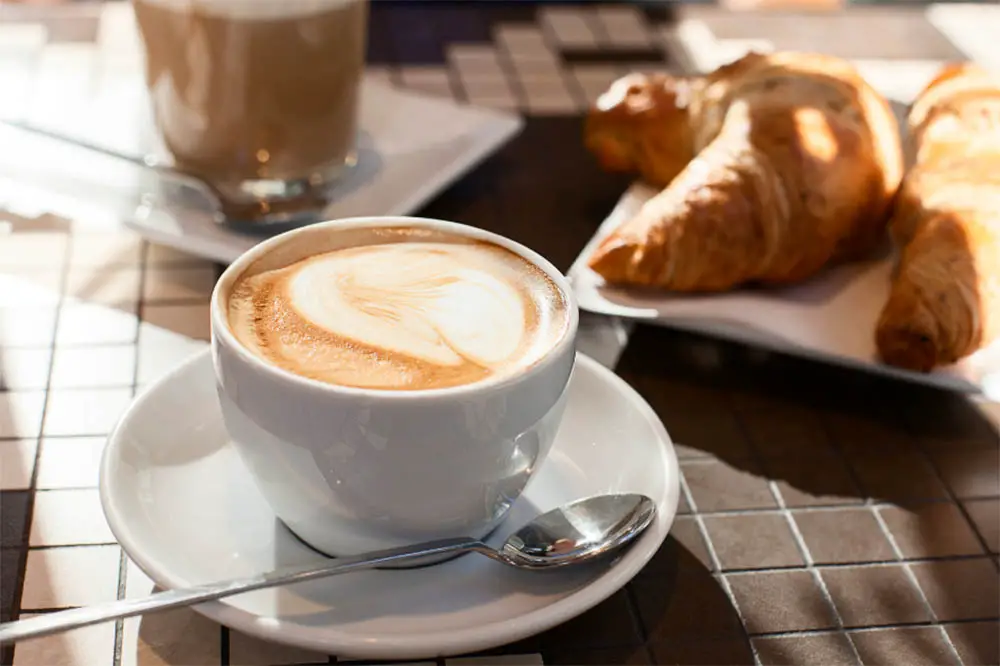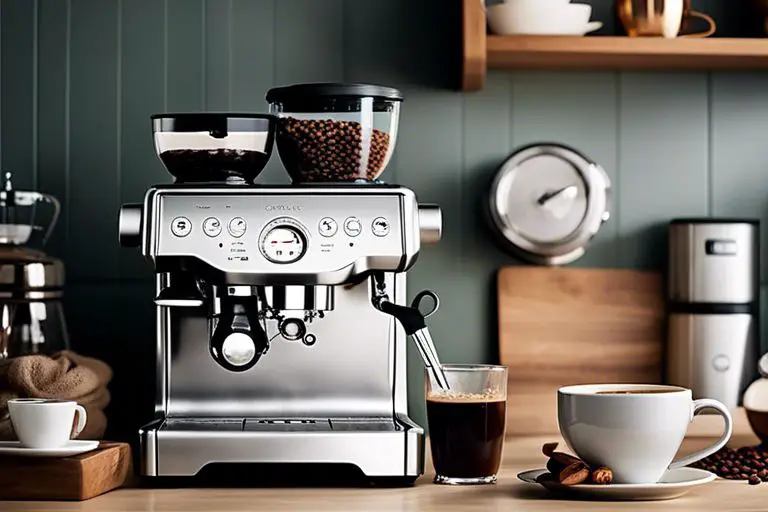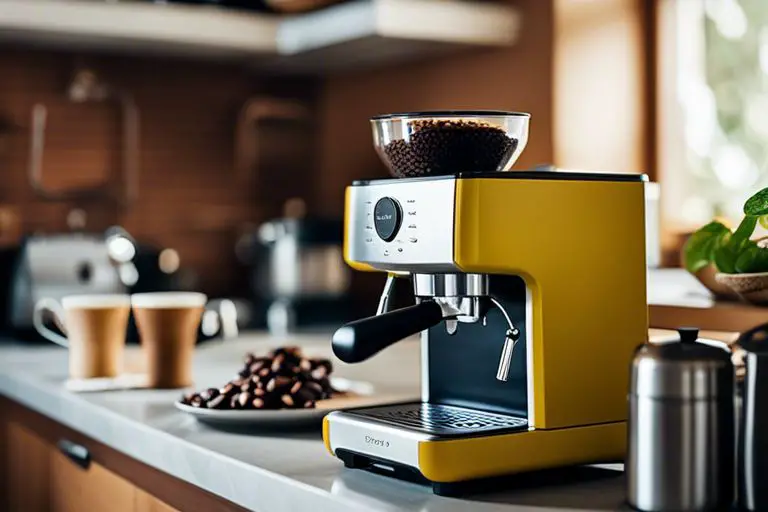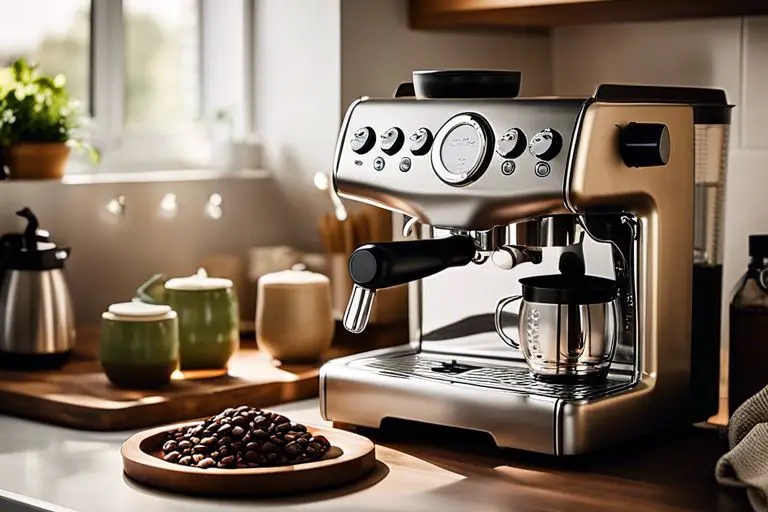Once you understand how to make your own cappuccino at home you will never pay £3 in a coffee shop again.
I have been drinking coffee from the likes of Starbucks, Costa Coffee and Café Nero for 20 years and I can honestly say that the cappuccino that I make on my home espresso machine is vastly better in quality than anything you will ever get in a coffee shop.
I still go to a coffee shop maybe once per week but it is more for research purposes than to enjoy the overpriced coffee that everyone has become accustomed to paying through the nose for.
Everyone will happily buy a car because it is too expensive to get a cab everywhere but everyone continues to spend £3 a day buying a below par coffee when you can do it yourself at home for £0.30p
Making your own cappuccino at home is like getting a Mercedes E-class when you order an Uber and were expecting a Toyota Prius – Its better and cheaper.
What equipment do you need to make a Cappuccino at home?
The first thing you need to make a cappuccino at home is an espresso machine with a steam wand.
If you want to make the best cappuccino possible don’t go for a bean to cup coffee machine that has a built-in milk carafe. At first, it seems like the best and most convenient way to make your drink of choice but in reality, it takes away the control you need in order to get the cappuccino just right.
You will never see an automatic milk carafe making a coffee in a coffee shop because it’s not the best way to do it. It also requires cleaning daily whilst you can just rinse out the milk in a jug in seconds and then you are good to go again.
It is also a myth that you need to spend a fortune on a coffee machine to make a good coffee and that is simply not true. We have an article on the best cheap espresso machines and you will be surprised at how quickly you will get a return on your investment with an espresso machine that won’t break the bank.
And that is exactly how you should view it – an investment, because if you choose wisely, by the time you have made about 50 drinks you will have your money back compared to what you would have spent in a coffee shop and then after that you are quid’s in.
What is the best milk to use for a cappuccino?
Use full-fat milk for making cappuccino. It is hands down the best way to get the maximum flavour for your coffee.
I know that most people buy semi-skimmed or even skimmed milk to use on a daily basis which is fine but you should not fear using the blue top milk for your coffee. Remember, you will only be using it once or twice a day so it’s not going to make you fat but it will taste absolutely delicious when added to an espresso to make a cappuccino.
How much milk is in a cappuccino?
We will give you the technical answer but the exact amount of milk is not that important because you can tailor it to your own individual requirements and create a “dry cappuccino” if you like a strong coffee or a “wet cappuccino” if you like it a little milder. Our personal view is that you should stick to Cappuccino instead of a Latte because with a cappuccino at least you get to taste the coffee as opposed to a Latte where (if you order it in a coffee shop) you basically get a pint of milk with a bit of coffee mixed in.
What is the ratio of milk to coffee in a cappuccino?
The thing to remember is that a Cappuccino is a small drink with a reasonably strong coffee flavour that should be approximately 1/3 coffee, 1/3 milk and 1/3 foam.
You can add or deduct the amount of milk that you use according to your own taste. You will be amazed at how much nicer your coffee is when you make it just how you like it. A nice dark brown colour will give a stronger flavour and a lighter brown colour will be milder.
You will never get it right in a coffee shop because whoever it is pouring the milk in will always add too much and just turn it into a latte.
How to Froth Milk
Heating and frothing your milk in just the right way is crucial to making the perfect cappuccino. We have written a detailed article on exactly how to froth milk for every drink type but specifically for a cappuccino you need to add about 60ml of milk to a milk pitcher and heat it to 65 degrees which is the perfect temperature for a cappuccino.
How many times have you been into a coffee shop and you get a lukewarm coffee that just ruins the whole experience?
You could get yourself a cheap milk pitcher and there is nothing wrong with that, just avoid the really cheap ones because they will wear out and corrode in no time and may seem like good value for money but in reality are a waste of money.
But, for literally a few pounds more we recommend getting yourself a milk pitcher with a built in thermometer that will show you on the outside of the jug the exact temperature of the milk so you can stop heating at exactly 65 degrees. I have been using one of these for years and in my opinion it’s a no brainer as it takes away the guess work and for the price of a pizza you can heat your milk perfectly for years.
Place the nozzle just below the surface of the milk and lean the nozzle up against the neck of the milk pitcher. You do not need to move or swirl it around. Move it up to the surface to create the froth and then bring it back down into the milk again to continue heating. After a few goes you will get it spot on.
When pouring, put a spoon up against the spout so that only milk goes in first and then when you can see the colour of coffee that you desire stop and manually spoon the foam in. The foam should be thick and creamy so that if you add sugar it should sit on the top and not sink into the coffee. You will be able to achieve this result best if you use whole milk rather than semi skimmed.
What do you put on top of a cappuccino?
It has become customary to sprinkle cocoa powder on top of a cappuccino to finish it off. Italy is the home of the cappuccino and you will never find chocolate being added to any cappuccino that you order in Italy.
It has somehow evolved over time and no one really knows why or where it came from. It’s a bit like sweet and sour chicken. if you go to China no one has ever heard of it but in England it one of the most popular “Chinese dishes”.
At the end of the day its personal preference but in our opinion adding chocolate to a cappuccino takes away the coffee flavour so it’s not for us but if you prefer it then it never did anyone any harm.
How do you make patterns in coffee?
With a little bit of practice you can make all sorts of pretty patterns in the foam that sits on top of your cappuccino. For a very low cost you can start with a milk pitcher with Latte art pen. The Latte art pen doubles up as a scoop for scooping the foam into the coffee and will also stop the foam being added before the milk.
It will take a little practice but in time you can create hearts and flowers and various shapes that will transform a simple cappuccino into a sensory experience and something that you will savour and enjoy time and time again.
The key thing here is that for a relatively small investment in an espresso machine with a steam wand you will soon be making yourself a cappuccino that is BETTER than a coffee shop at a fraction of the price.
What’s the difference between a cappuccino and other types of coffee?
Made popular during both world war one and world war two, a cappuccino starts with one or two shots of espresso (most commonly two shots of espresso) then followed by steamed milk and a delicious dollop of frothed milk.
The foam on top of the cappuccino is one of the main features that sets it apart from other types of coffee, and also so happens to be one of the most difficult parts of the cappuccino to get right!
A cappuccino is subtly creamy and traditionally has a strong espresso flavour due to the cappuccino having less milk and more foam than other types of coffee.
When made absolutely perfectly, a cappuccino should have a velvety and thick texture, and this is mainly down to the 1-to-1 ratio of foam to liquid.
Interestingly enough, despite the huge dollop of milky foam that goes on top of the cappuccino, it’s actually one of the most healthy coffee options on the menu!
A cappuccino tends to have fewer calories than a latte, for example, because it is specifically made to have a smaller amount of milk.
For this reason, while your standard latte made with whole milk might equate to around 215 calories (on average) if you were to instead opt for a cappuccino of the same size, you would only be consuming around 115 calories.
Fun fact: Coffee connoisseurs can figure out the foam to liquid ratio, just by feeling the weight of the cappuccino!
What Milk can be used to make a cappuccino?
When it comes to cappuccino making, you can choose from a variety of different milk options.
Generally speaking, you should always make sure that you are using fresh milk, as milk that is near (or getting close to) its expiration date often tends to be unable to froth well, and the foam is one of the most integral parts of the perfect cappuccino.
However, besides ensuring that the milk you use is fresh, you can choose to use whichever type of milk you want. You can use whole milk, semi-skimmed or skimmed, as well as non-dairy alternatives such as oat milk.
As a side note, if you want the best froth, then we recommend using whole milk due to the fat content, and oat milk (Oatly Original makes a great foam) if you are using a non-dairy alternative.
How to make a cappuccino: Step-by-step instructions:
If you love nothing more than a great cappuccino, then there’s simply no reason why you can’t enjoy this small but mighty espresso coffee in the comfort of your own home!
Homemade cappuccino can be just as delicious as the one that you buy in a coffee shop, and more often than not it’s a whole lot cheaper, too!
- First things first, you’re going to want to steam your milk – safely! Heat up one cup of milk in a saucepan by placing it over medium heat on your stove and allow it to warm up. Allow the milk to simmer until you notice that bubbles have formed around the edges of the pan, however, don’t let it boil, otherwise, the milk will sour. As soon as you can see that the bubbles have begun to form around the edge, immediately take the saucepan off the stove, and allow it to cool.
- After you have sorted out your milk, the next step that you will need to do is to froth up the milk and make it deliciously foamy. You could do this step by hand with a stirring whisk, although we do recommend using an electric mixer, as the speed of one will be able to really froth up the milk and give you the best results. Pour your milk into a bowl or glass, and then insert your electric whisk. Make sure that you keep it submerged while whisking (so that the milk doesn’t splatter anywhere) and continue whisking the milk in a gentle, circular motion until you are happy with the level of froth that the milk has.
- Next, it will be time to make the coffee! In order to achieve an authentic coffeehouse flavour, we recommend using ground coffee and making it in either a French press or coffee maker, rather than using instant coffee. Whether you prefer a full-bodied dark roast or an aromatic light roast, add two tablespoons of your chosen coffee grounds into the French press, and then proceed to make it as you normally would.
- Once you feel that you have given your coffee enough time to brew in the French press or your coffee maker of choice, you can now proceed to make your cappuccino! This is a step that you have to get right, otherwise, you might end up needing to start all over from scratch. To make a classic cappuccino, you will need to fill your mug with ⅓ espresso, ⅓ steamed milk, and then ⅓ of milky foam – in that order!
- Once you’ve made your cappuccino, you can then either leave it as it is or gets a little creative and add your choice of flavoured syrup (vanilla is delicious, we recommend this one) or even add a classic sprinkling of chocolate. As soon as you’re happy with your cappuccino, all you will then need to do is give it time to cool, sit back, relax and enjoy!

